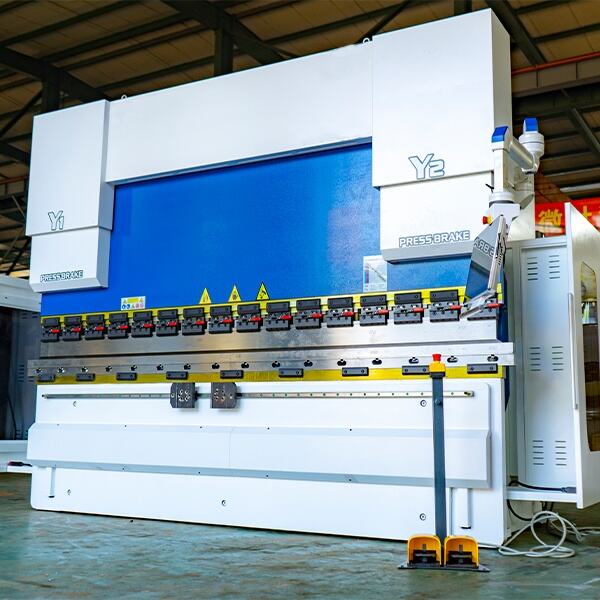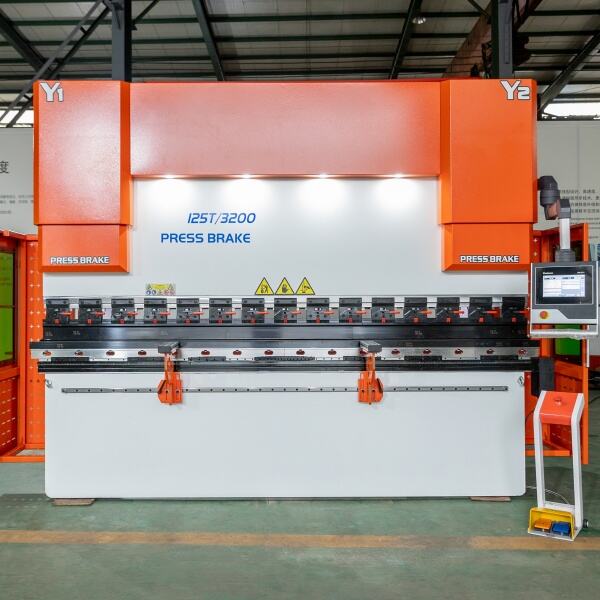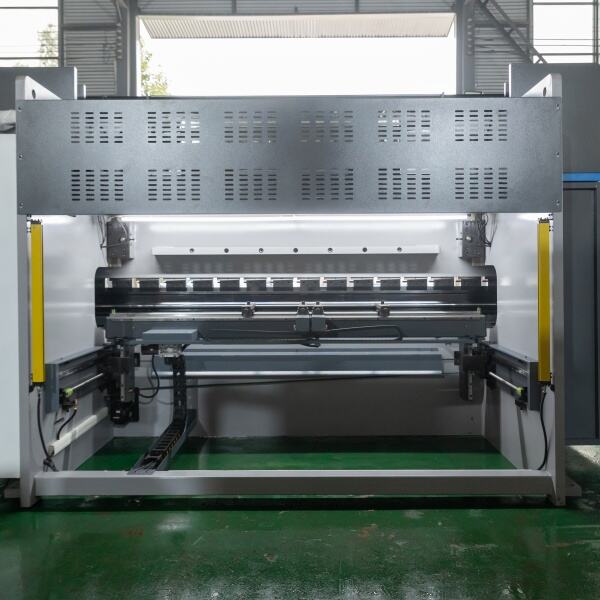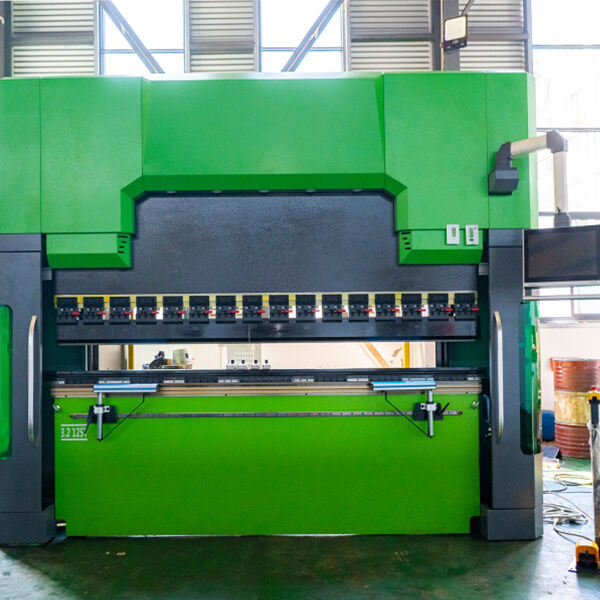
יעילות תפעולית של בלם מכשירים CNC מתייחסת ליכולת של המכונה לייצר רכיבים מתכותיים עקומים באיכות גבוהה בזמן הקצר ביותר האפשרי, תוך שמירה על הפסולת החומרית, עלויות העבודה וההפסקה, מדד קריטי לתעשיות כמו רכב, ספינה ב- RAYMAX, בלמים CNC שלנו מיועדים לייעל יעילות תפעולית באמצעות טכנולוגיה מתקדמת, עיצוב מעודד ותכונות ממוקדות במשתמש, המבוססות על 22 שנות ניסיון בייצור ותשובות מ-4000+ לקוחות עולמיים. אחד המניעים העיקריים של יעילות תפעולית הוא אוטומציה CNC, אשר מבטל את הצורך בהתערבות ידנית במשימות חוזרות ושוב. בלמים CNC שלנו מצוידים במערכת בקרת תומכת באחסון פרמטר אוטומטי, המאפשרת למפעילים לשמור מאות תוכניות כפול עבור חלקים שונים. לדוגמה, יצרן רכב המפיק שלושה סוגים של רכיבי תציר (כל אחד עם זוויות כופף ייחודיות ודרישות חומרי) יכול לעבור בין תוכנות בפחות מ-5 דקות שיפור משמעותי לעומת בלמים מדחפים ידניים, הדורשים 30+ דקות של זמן הגדרה לכל סוג זה מקטין את זמן הפסקת הפעילות בין ערכים, מגדיל את הפרידוקטיביות הכוללת של המכונה. בנוסף, תכונת הסימולציה 3D של מערכת CNC שלנו מאפשרת למפעילים להציג מראש את רצף הכפייה לפני הייצור, לזהות בעיות פוטנציאליות (כגון התנגשות כלי או פריצת חומר) אשר אחרת יגרמו לעיכובים יקרים בזבוז חומר. לקוח של ספינת ספינה בדרום מזרח אסיה דיווח על הפחתת 12% בזבוז חומרים לאחר אימוץ הבלם של מכשיר המיתוח CNC שלנו, מכיוון שהאופציה הסימולטיבית ביטלה את עיקול הניסיון והטעייה של לוחות פלדה יקרים. גורם מפתח נוסף ביעילות הפעלה הוא מהירות הכפייה של המכונה וזמן המחזור. בלמים CNC שלנו מצוידים במערכות הידראוליות בעלות ביצועים גבוהים המספקות מהירות רם מהירה (עד 150 מ"מ/ש עבור שלב הגישה המהירה) תוך שמירה על דיוק. מהירות המקלות מותאמת באופן אוטומטי בהתאם לעובי החומר ולסוגו. לדוגמה, לוחות אלומיניום רזים יותר (1-2 מ"מ) מתכופפים במהירות גבוהה יותר, בעוד שלוחות פלדה עבים יותר (10-15 מ"מ) דורשים מהירות איטית יותר כדי להבטיח חלוקת איזון זה בין מהירות ודיוק מקטין את הזמן לפי עיקול: עיקול של 90 מעלות על צלחת פלדה של 5 מ"מ לוקח כ - 2 שניות עם המכונה שלנו, לעומת 4 שניות עם בלמים CNC קונבנציונליים. עבור לקוח בתעשיית החשמל המייצר 500 כלי לחץ מדי יום, זה מתורגם לצמצום של שעתיים בזמן הייצור ביום. יעילות הכלים משחקת גם תפקיד קריטי ביעילות התפעולית. בלמים CNC שלנו תואמים מערכות כלי שינוי מהיר, המאפשרים למפעילים להחליף אגרופים ומותחים בפחות מ-10 דקות חלק קטן מהזמן הנדרש עבור כלי מסורתי (30+ דקות). זה מועיל במיוחד לתעשיות כמו תעשיית הקלה, שבהן ייצור של ערכים קטנים של חלקים שונים (לדוגמה, תיבות חשמליות, רכיבי רהיטים) דורש שינוי כלי תכופות. בנוסף, כלי העבודה שלנו עשויים מחומרים עמידים לגזמה גבוהה (לדוגמה, פלדה H13), אשר מוסיף את חיי הכלים ל-50,000+ עיקולים ומפחית את תדירות החלפת הכלים ואת זמן הפסקת הפעילות הקשור. לקוח בתעשייה הקלה במערב אירופה דיווח על העלייה של 25% בזמן פעילות המכונה לאחר המעבר למערכת הכלים שלנו, מכיוון שהם כבר לא היו צריכים לעצור את הייצור עבור התאמות מורחבות של הכלים. תחזוקה ואמינות הן גם חיוניות ליעילות תפעולית מתמשכת. בלמים CNC שלנו נועדו עם גישה קלה לרכיבים מרכזיים (למשל, מסננים הידראוליים, מודולי בקרת CNC), מה שהופך תחזוקה שגרתית מהירה ופשוטה יותר. מערכת CNC של המכונה כוללת גם תכונה תחזוקה תחזית המזהירה את המפעילים לצרכים שירותים הקרובים (לדוגמה, החלפת שמן הידרולי, חידוש כלי) בהתבסס על נתוני שימוש. זה מונע תקריות בלתי צפויות, אשר עלולות לגרום לשעות או ימים של הפסקת פעולה. לדוגמה, יצרן ציוד רכבת במזרח התיכון משתמש בבלם המלח CNC שלנו כדי לייצר רכיבים של רכבות; תכונת תחזוקה תחזית הודיעה להם על חותם הידרולי משוגר שבועיים לפני כישלון, ומאפשרת להם להחליף אותו במהלך חלון תחזוקה מתוכנן לבסוף, הכשרה של מפעילים תורמת ליעילות תפעולית. ב- RAYMAX, אנו מספקים הכשרה מקיפה כדי להבטיח שהפעילים יוכלו לנצל באופן מלא את התכונות של המכונה, כגון האכלה אוטומטית, עיבוד ערכה, וזיהוי שגיאות. מפעיל מאומן היטב יכול לזהות ולפתור בעיות קטנות (למשל, כניסה לא נכונה של פרמטרים) במהירות, תוך שמירה על איחור בייצור. פורטל ההכשרה המקוונת שלנו מאפשר גם למפעילים לרענן את מיומנויותיהם או ללמוד תכונות חדשות מרחוק, להבטיח שהם נשארים מעודכנים עם יכולות המכונה. לסיכום, יעילות הפעלה של בלם CNC היא מדד רב-חצופה אשר תלוי באוטומציה, מהירות, כלי, אמינות ומומחיות המפעיל. ב-Raymax, בלמים CNC שלנו מיועדים להצטיין בכל התחומים האלה, ומביאים רווחים מוחשיים ביעילות ללקוחותינו בתעשיות שונות. בין אם זה מקטין את זמן ההגדרה, מגדיל את מהירות הכפייה, או מקטין את זמן הפסקת השימוש, המכונות שלנו נועדו לעזור ללקוחות להשיג את מטרות הייצור שלהם תוך שמירה על איכות גבוהה.


